'Each drum has its own story': NSCAD exhibit explores Indigenous language revitalization
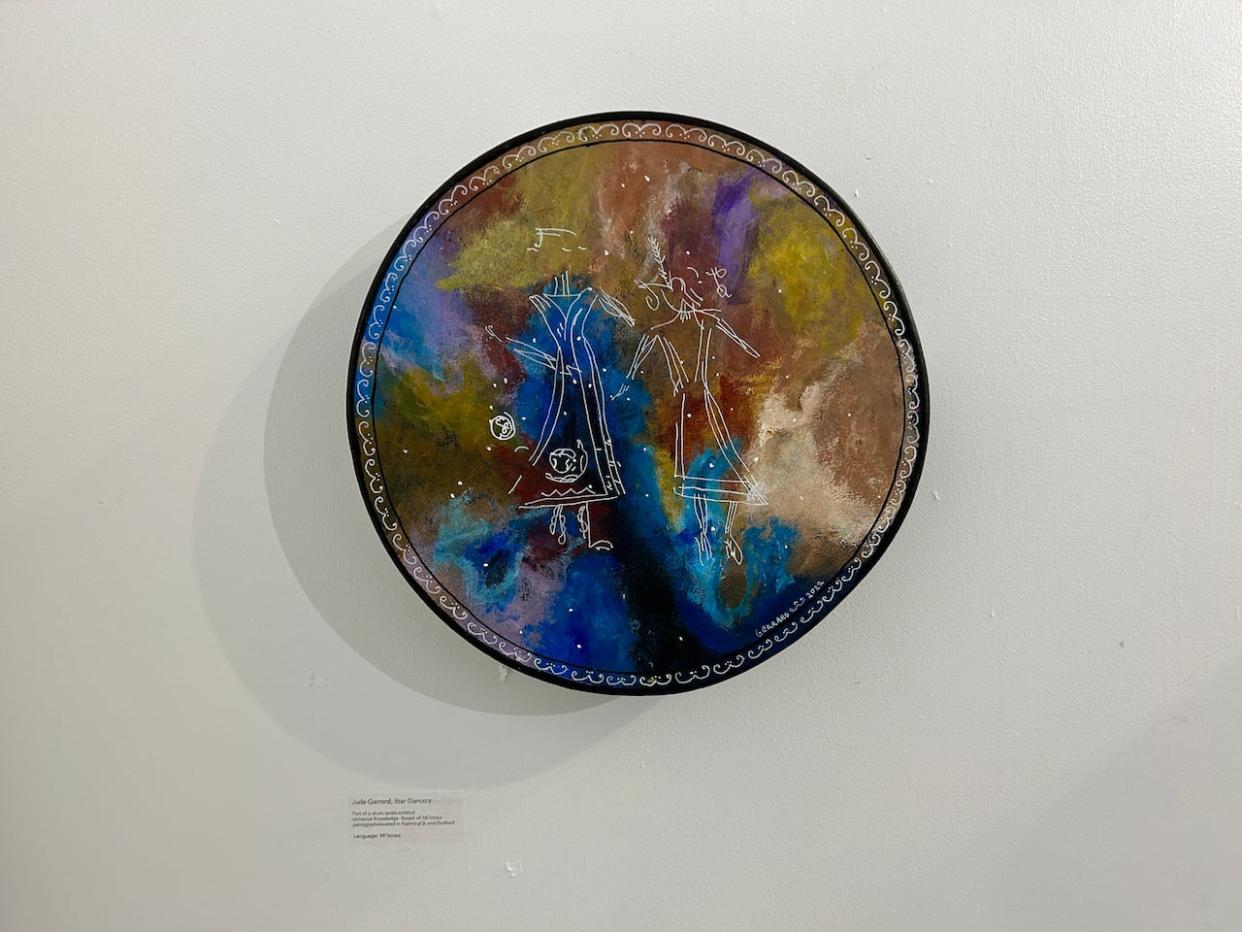
At the Treaty Space Gallery on NSCAD's port campus in Halifax, 13 meticulously painted hand drums have been hung on the walls, each expressing individual journeys of revitalizing Indigenous languages.
Some are adorned with words in the language of the artists who created them, others feature cultural motifs tied to their language.
"Each drum has its own story," said artist Dr. Joshua Schwab-Cartas, who led the project, titled Living our Languages, which is made up of paintings on rawhide drums.
The exhibit aims to dispel the notion that Indigenous languages are disappearing, and speaks to the experience of existing within institutions that aren't built for Indigenous people.
Scholars, artists and researchers affiliated with the university organized and facilitated multiple workshops with local Indigenous artists to create the artwork on the drums featured in this exhibit.
The workshops encouraged community-building, bringing together artists with a common goal of expressing their connection to their language.
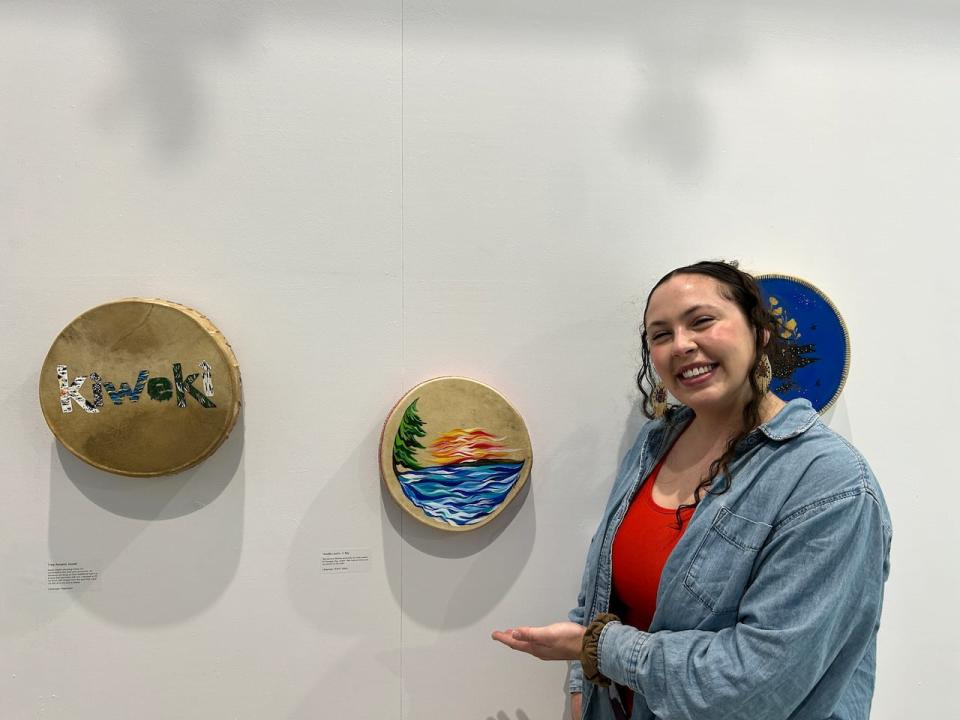
Artist Natalie Laurin with her drum, titled G Bay. A ceinture fléchée, or arrowed sash, surrounds the artwork, which depicts the lively waters of Georgian Bay, where Laurin said she feels most at home and connected to her roots. (Sis'moqon)
Natalie Laurin, a Métis exhibitions co-ordinator with the gallery, was part of the team that facilitated the workshops who spoke on the importance of community-building at NSCAD.
"We are a pretty small amount of Indigenous students, staff and faculty here," said Laurin.
"We first gathered and we went around and everyone talked a little bit about where they're from and where they're at, and their language learning journey and destigmatizing [that journey]."
Participants ranged in their level of fluency, she said. Some had grown up in their language. Others were just beginning to learn it.
Laurin said the gallery focuses on highlighting stories and contemporary artwork of Indigenous people and their relationship to the land, as well as treaties and treaty education.
She created a drum that depicted the land because that is where she feels most connected to her culture.
"That's where I feel most inspired to learn the language," she said.
"I miss home and I wanted to show it on [my drum], and I miss my family from there and sitting at the kitchen table hearing my papere talk in his French accent with Michif words sprinkled in there."
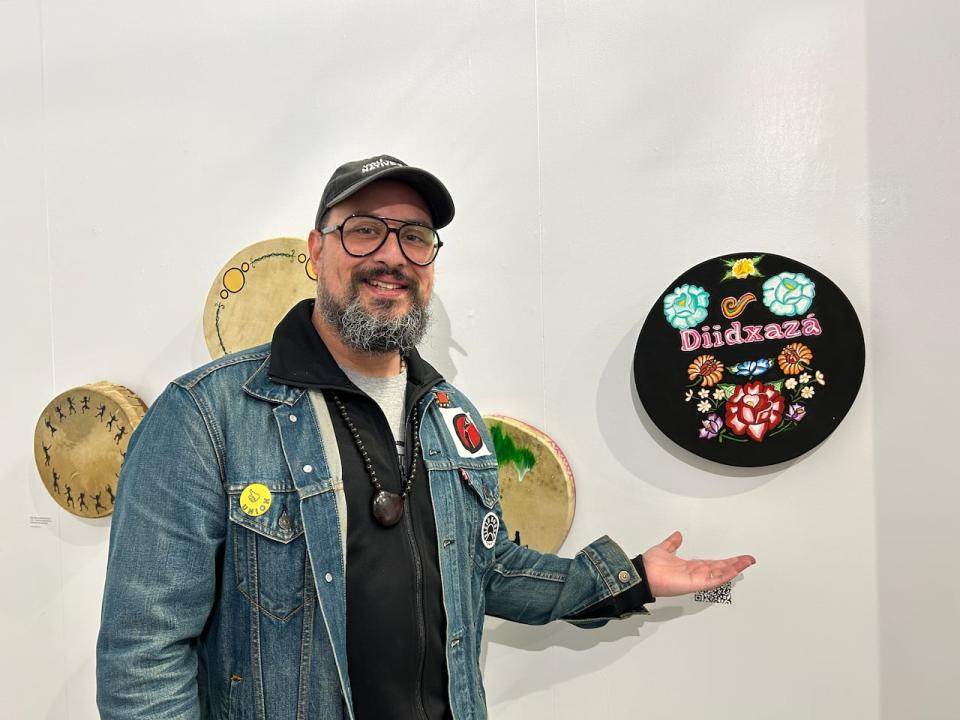
Artist Joshua Schwab-Cartas is pictured with the drum titled Guie' saa, which he created with his daughter, Najeli Schwab Nicolantonakis. (Sis'moqon)
Schwab-Cartas, a Binnizá scholar and assistant professor at NSCAD, said the project is "really about celebrating the resiliency of our ancestors and everybody who has sat around that kitchen table teaching us our language… whether it's around the table or over Zoom or in my case under a mango tree in our community."
The exhibit is also about representation, feeling seen and carving out a space where Indigenous people feel reflected and honoured, Schwab-Cartas said.
"Most education systems, like mainstream education, don't really take into consideration Indigenous methodologies, needs, agendas and objectives," he said.
"This space wasn't created for us or by us," he added. The exhibit "is a way of telling NSCAD and other institutions that we are an important part of the makeup of universities."
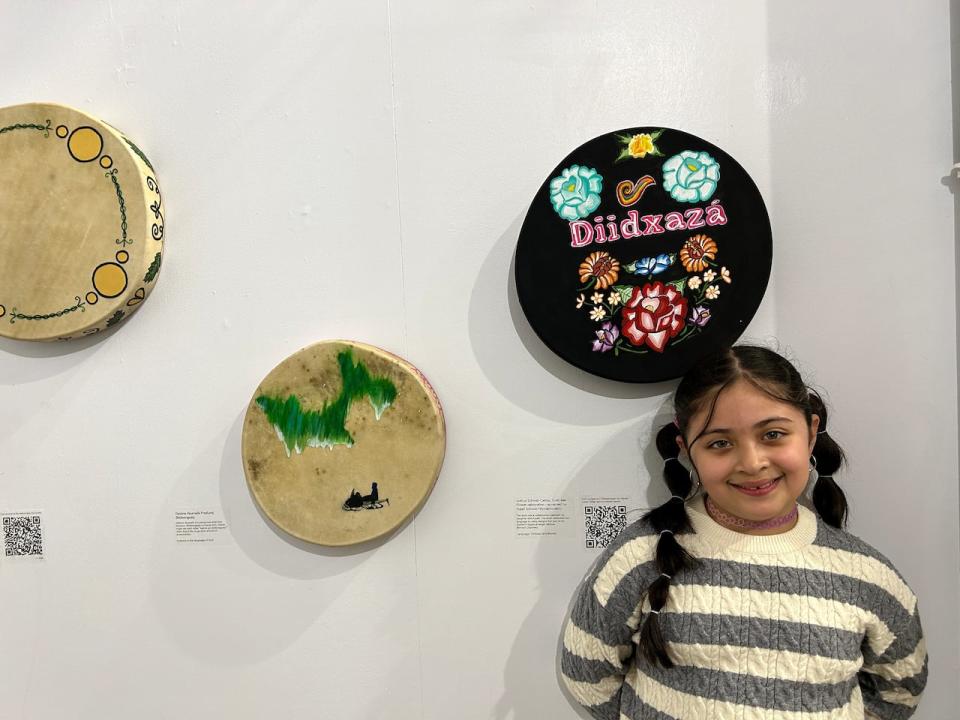
Najeli is pictured with a drum, pictured on the right, which she created in with her father. Titled Guie' saa, which translates to flower celebration, it celebrates their language using designs that are part of women's regalia among Isthmus Binnizas, a Zapotec people. (Sis'moqon)
Schwab-Cartas collaborated with his eight-year-old daughter, Najeli Schwab Nicolantonakis, to create a drum that represents the regalia worn by women in their Binnizá culture to honour women and the legacy they carry in his language-learning journey.
"Some of the first words I ever like learnt in my language came from my great grandmother and my grandmother," he said.
He is learning the language together with his daughter, Najeli, and said he is honouring the strong women in communities that bring their cultural life forward. That includes his daughter, whom he said is "going to be the next matriarch in our family, who can speak about our culture and language."
The exhibit include QR codes that contain stories, songs, or expressions of language from participants and also a browser allowing access to Native Land Digital, a website that maps Indigenous territories, treaties and languages across the world.
Some of the QR codes feature the voices of participants speaking about the drums they created, said Sydney Wreaks, a Métis research assistant and facilitator with the project.
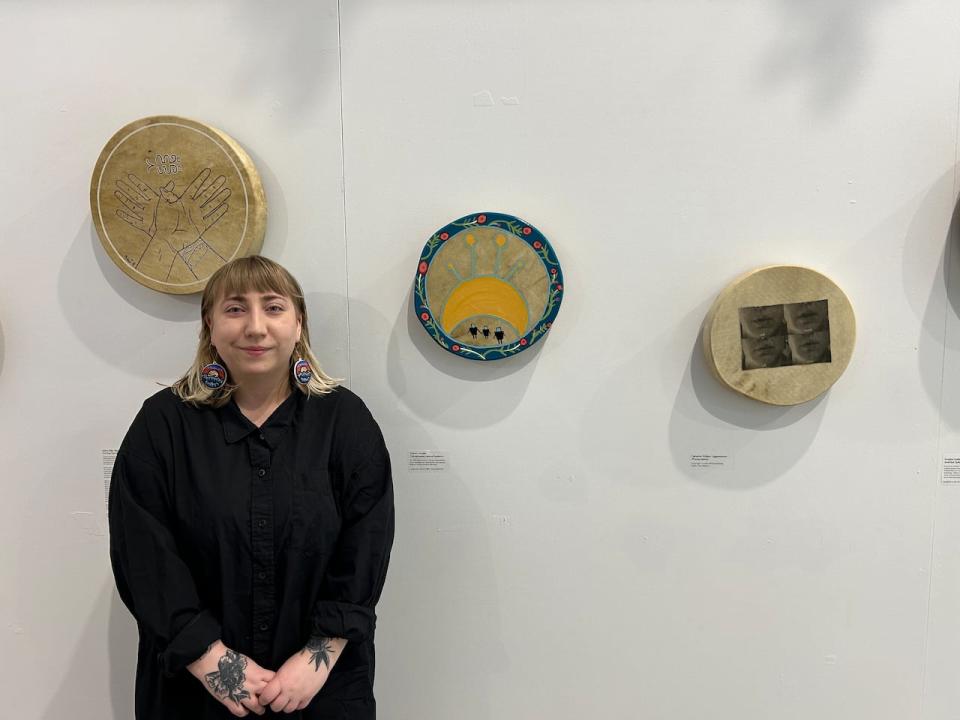
Artist Sydney Wreaks stands next to her drum, in the centre of the photo. Titled Onkwehonwe Lakoterihwaien:ni, it means the responsibility of human beings in Kanien'kéha kateweiénhstha, and represents our relationship with the land. (Sis'moqon)
"You're going to have some people talking specifically about maybe the design and the history behind that, and how it's tied to their language or singing and going through their languages," Wreaks said.
The Living our Languages exhibit runs until April 30 at NSCAD's Treaty Space Gallery.
MORE TOP STORIES


